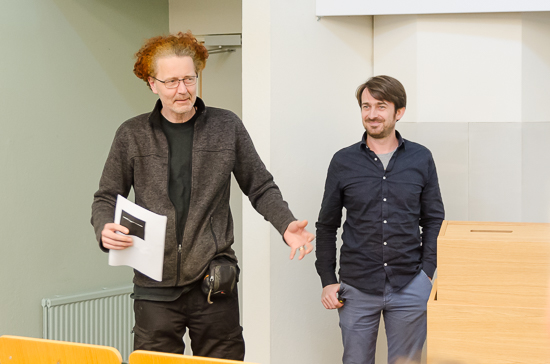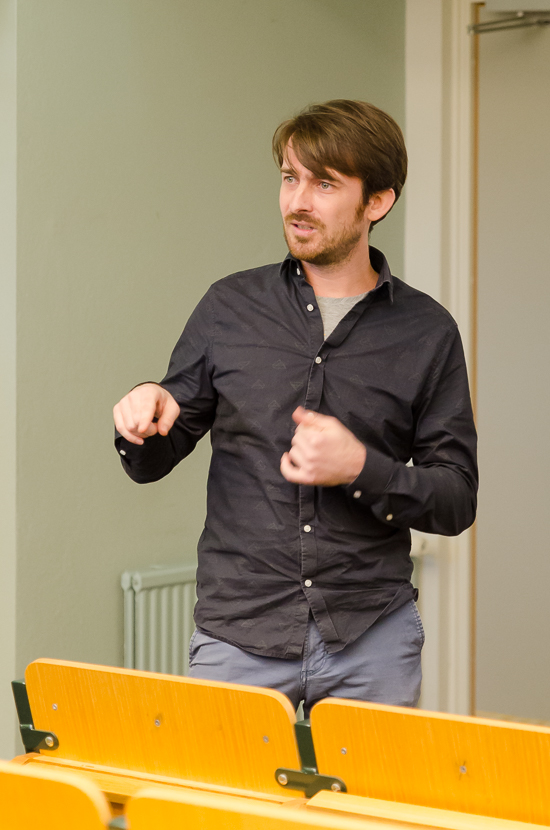Today, Olivier Van Aken held his docent lecture “There and back again: the evolution of mitochondria”. Even if everybody in the audience had heard of mitochondria before, Olivier made sure we had got it right with a brief explanation.
A mitochondrion is a cell organelle that produces energy in eukaryote cells. A eukaryote cell is a cell with a nucleus enclosed within membranes and it also contains other cell organelles like Golgi apparatus and endoplasmic reticulum.

Besides energy production, the mitochondria are involved in heat production, calcium ion storage, signaling, programmed cell death, cell metabolism, heme and steroid synthesis, and iron-sulfur cluster biosynthesis.
The mitochondria can move by themselves. Olivier showed a film where they “swam” around in a cell. Fascinating!
Lynn Margulis, the scientist that first proposed that the mitochondria descendent from bacteria that had been incorporated in cells, had to send in her paper 15 times before it was accepted. Nowadays her theory that the mitochondrion is an endosymbiont has been proven right in lab experiments.
– If you want to find something very old, grab your boat and go where no one else wants to go, said Olivier. That was just what the scientists, who wanted to find out where mitochondria came from, did. They took samples from very deep places in the oceans and found bacteria that may be related to the bacteria that became the mitochondrion.
Mitochondria is about 2 000 million years old, from around the time when the oxygen concentration in the air increased. Since the first bacteria became incorporated in cells the mitochondrion genome had to a large extent relocated to the cells’ nuclear genome.
– Can genes fly, asked Olivier, probably not, but perhaps they swam to the nucleus. Another problem is how the proteins created in the nucleus find their way back to the mitochondrion.
Olivier started to ask if we believed that all eukaryotes had mitochondria. There were some different opinions in the audience. The answer Olivier had to that question was that nearly all have. There are some eukaryotes that have highly reduced mitochondria and recently the scientists have also found a eukaryote without mitochondria at all. They suggest that this is a secondary loss. Like Olivier said, there and back again.

Thank you, Olivier, for an interesting talk and congratulations in advance!
Text and photo Inger Ekström



